Very few wild, relatively pristine lands remain in the lower 48 states -- about 8% of the total land area. Less than half of that 8% lie within protected areas like national parks and officially designated wilderness areas. The rest of these scarce wild lands are vulnerable to mining, oil and gas drilling, off-road vehicle abuse, etc. Since 8% is a small number, one would think that no one would be in favor of letting it dwindle down to, say, 4%. And yet a small but energetic minority are in favor of exactly that. The arguments these wilderness opponents offer fall into three broad categories.
- The first category: selfish but rational. A typical example is "I'm not satisfied that the large majority of public lands are open to my noisy off-road vehicle or drilling rig; I insist that a very large majority of public lands be open to my noisy off-road vehicle or drilling rig."
These ghost trails are the subject of this week's blog post.
Here's some very brief legal background for the amusing photos which follow. A one-sentence provision of the Mining Law of 1866 (not a typo -- 145 years ago) allows for the "right-of-way for the construction of highways across public lands." This statute was later renamed RS2477. In 1976 it was repealed, but the repeal was subject to valid existing rights. Just what constitutes a valid existing right in this context is open to debate, as is the extent of this right. When rural western counties realized this could be a tool for sabotaging wilderness, they took a very extreme view as to what "highways" existed as a result of RS2477.
Consider Grand County, Utah, where I live. In 1985 Grand County's official RS2477 claims near the Green River looked like this.
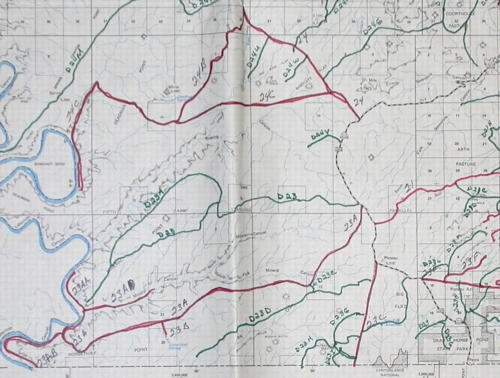
By 2002, Grand County had changed its mind and was claiming that a vastly larger network of county roads existed prior to 1976 (when RS2477 was repealed).
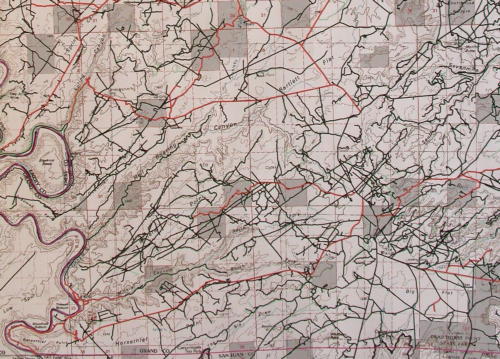
A similar surge in ghost highways occurred in most Utah counties and in many other western states as well.
The region depicted in the maps above has an area of approximately 200 square miles and a population of approximately zero. So why is Grand County so eager to claim so many rights-of-way?
A full explanation would fill this entire post, but here's a brief answer.
Despite the fact that these are public lands (like National Parks), owned equally by all Americans, the County would like to treat these areas as its own private fiefdom and promote extractive development at the expense of preservation.
They hope that if they legally establish rights to these routes then that will prevent the federal government from preserving the lands in their natural state.
Did these rural counties really overlook legitimate, significant roads in the 1980's, only to rediscover them in the 1990's? Or were they just making up nonsense claims in the 1990's in order to interfere with the public's right to preserve public lands for future generations? Let's see what some of these lines on the map actually look like on the ground. We'll concentrate on San Juan County, Grand County's neighbor to the south.
Here's County Road D2621 in San Juan County, Utah:
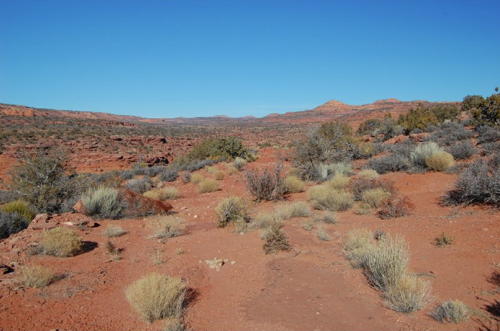
Note that there's slightly less vegetation down the center of the photo.
Years ago someone probably drove a Jeep through this area.
Now San Juan County is claiming it as a highway.
Here's San Juan County Road D4800:
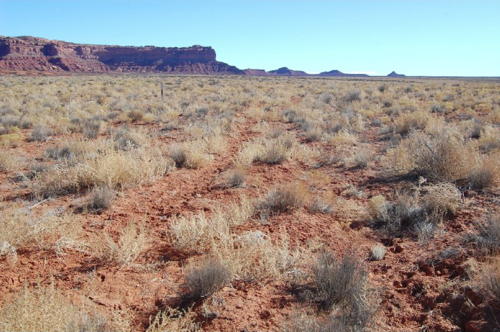
You can make out a cow trail just left of center, and a parallel, somewhat less popular cow trail just right of center.
These cow trails were once tire tracks, and that's apparently good enough for San Juan County to claim it as a highway.
Here's San Juan County Road D4776:

Several decades ago this may have been a mineral exploration route.
Here's San Juan County Road D2294:
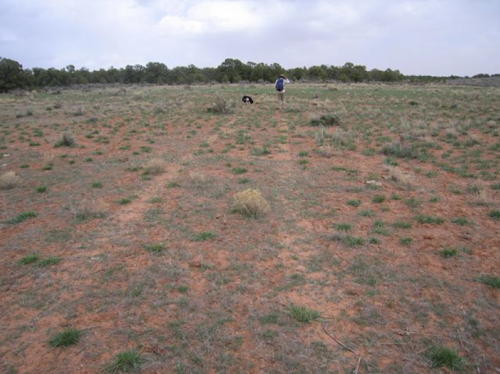
Those are fresh tire tracks.
Someone has actually driven a short distance on this "county road."
But you would need to be under the influence of some pretty powerful and distorted ideology to consider these faint tracks a legitimate argument against wilderness.
These lands remain pretty much the way they have been for thousands of years. We should protect the last remaining unspoiled acres of our original inheritance. Neither fake roads, unproductive drilling nor transient joy riding should take them away from us.